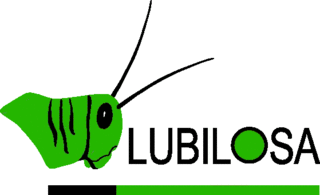
Pesticides are substances that are meant to control pests. The term pesticide includes all of the following: herbicide, insecticides nematicide, molluscicide, piscicide, avicide, rodenticide, bactericide, insect repellent, animal repellent, antimicrobial, and fungicide. The most common of these are herbicides which account for approximately 80% of all pesticide use. Most pesticides are intended to serve as plant protection products, which in general, protect plants from weeds, fungi, or insects. As an example - The fungus Alternaria is used to combat the Aquatic weed, Salvinia.

Insecticides are substances used to kill insects. They include ovicides and larvicides used against insect eggs and larvae, respectively. Insecticides are used in agriculture, medicine, industry and by consumers. Insecticides are claimed to be a major factor behind the increase in the 20th-century's agricultural productivity. Nearly all insecticides have the potential to significantly alter ecosystems; many are toxic to humans and/or animals; some become concentrated as they spread along the food chain.
Under United States law, pesticide misuse is considered to be the use of a pesticide in a way that violates laws regulating their use or endangers humans or the environment; many of these regulations are laid out in the Federal Insecticide, Fungicide, and Rodenticide Act (FIFRA). The most common instances of pesticide misuse are applications inconsistent with the labeling, which can include the use of a material in any way not described on the label, changing dosage rates, or violating specific safety instructions. Pesticide labels have been criticized as a poor risk communication vehicle, leading some officials and researchers to question whether "misuse" is an appropriate term for what are often "unintended uses" resulting from a poor understanding of safety and application instructions. Other kinds of pesticide misuse include the sale or use of an unregistered pesticide or one whose registration has been revoked and the sale or use of an adulterated or misbranded pesticide. Under most jurisdictions, it is illegal to alter or remove pesticide labels, to sell restricted pesticides to an uncertified applicator, or to fail to maintain sales and use records of restricted pesticides.

Integrated pest management (IPM), also known as integrated pest control (IPC) is a broad-based approach that integrates practices for economic control of pests. IPM aims to suppress pest populations below the economic injury level (EIL). The UN's Food and Agriculture Organization defines IPM as "the careful consideration of all available pest control techniques and subsequent integration of appropriate measures that discourage the development of pest populations and keep pesticides and other interventions to levels that are economically justified and reduce or minimize risks to human health and the environment. IPM emphasizes the growth of a healthy crop with the least possible disruption to agro-ecosystems and encourages natural pest control mechanisms." Entomologists and ecologists have urged the adoption of IPM pest control since the 1970s. IPM allows for safer pest control.

Pest control is the regulation or management of a species defined as a pest, a member of the animal kingdom that impacts adversely on human activities. The human response depends on the importance of the damage done and will range from tolerance, through deterrence and management, to attempts to completely eradicate the pest. Pest control measures may be performed as part of an integrated pest management strategy.

Agricultural wastewater treatment is a farm management agenda for controlling pollution from surface runoff that may be contaminated by chemicals in fertiliser, pesticides, animal slurry, crop residues or irrigation water.
Biopesticides, a contraction of 'biological pesticides', include several types of pest management intervention: through predatory, parasitic, or chemical relationships. The term has been associated historically with [biological control] –
Forest integrated pest management or Forest IPM is the practice of monitoring and managing pest and environmental information with pest control methods to prevent pest damage to forests and forest habitats by the most economical means. Forest IPM practices vary from region to region and particularly by state, according to the habitat and forests present. Forest integrated pest management or Forest IPM combines cultural, biological and chemical technologies to reduce pest damage to levels below those that of economic damage. Forest IPM is utilized for the whole life of the tree, from site prep to harvest. An IPM treatment is utilized before the cost of the treatment is equal to the reduction in crop value due to past injury, which is called the economic injury level. Forest integrated pest management has a strong emphasis on intensive forest management.

A farmer field school (FFS) is a group-based learning process that has been used by a number of governments, NGOs, and international agencies to promote integrated pest management (IPM). The first FFSs were designed and managed by the UN Food and Agriculture Organization in Indonesia in 1989. Since then, more than two million farmers across Asia have participated in this type of learning.

A sprayer is a device used to spray a liquid, where sprayers are commonly used for projection of water, weed killers, crop performance materials, pest maintenance chemicals, as well as manufacturing and production line ingredients. In agriculture, a sprayer is a piece of equipment that is used to apply herbicides, pesticides, and fertilizers on agricultural crops. Sprayers range in size from man-portable units to trailed sprayers that are connected to a tractor, to self-propelled units similar to tractors, with boom mounts of 4-30 feet up to 60–151 feet in length depending on engineering design for tractor and land size.

Pesticide application refers to the practical way in which pesticides are delivered to their biological targets. Public concern about the use of pesticides has highlighted the need to make this process as efficient as possible, in order to minimise their release into the environment and human exposure. The practice of pest management by the rational application of pesticides is supremely multi-disciplinary, combining many aspects of biology and chemistry with: agronomy, engineering, meteorology, socio-economics and public health, together with newer disciplines such as biotechnology and information science.

Pesticide drift refers to the unintentional diffusion of pesticides and the potential negative effects of pesticide application, including off-target contamination due to spray drift as well as runoff from plants or soil. This can lead to damage in human health, environmental contamination, and property damage.
Ultra-low volume application of pesticides has been defined as spraying at a Volume Application Rate (VAR) of less than 5 L/ha for field crops or less than 50 L/ha for tree/bush crops. VARs of 0.25 – 2 l/ha are typical for aerial ULV application to forest or migratory pests.

The impact of pesticides consists of the effects of pesticides on non-target species. Pesticides are chemical preparations used to kill fungal or animal pests. Over 98% of sprayed insecticides and 95% of herbicides reach a destination other than their target species, because they are sprayed or spread across entire agricultural fields. Runoff can carry pesticides into aquatic environments while wind can carry them to other fields, grazing areas, human settlements and undeveloped areas, potentially affecting other species. Other problems emerge from poor production, transport and storage practices. Over time, repeated application increases pest resistance, while its effects on other species can facilitate the pest's resurgence.

Silwood Park is the rural campus of Imperial College London, England. It is situated near the village of Sunninghill, near Ascot in Berkshire. Since 1986, there have been major developments on the site with four new college buildings. Adjacent to these buildings is the Technology Transfer Centre: a science park with units leased to commercial companies for research.
The paradox of the pesticides is a paradox that states that applying pesticide to a pest may end up increasing the abundance of the pest if the pesticide upsets natural predator–prey dynamics in the ecosystem.

LUBILOSA was the name of a research programme that aimed at developing a biological alternative to the chemical control of locusts. This name is an acronym of the French title of the programme: Lutte Biologique contre les Locustes et les Sauteriaux. During its 13-year life, the programme identified an isolate of an entomopathogenic fungus belonging to the genus Metarhizium and virulent to locusts, and went through all the necessary steps to develop the commercial biopesticide product Green Muscle based on its spores.
A spray is a dynamic collection of drops dispersed in a gas. The process of forming a spray is known as atomization. A spray nozzle is the device used to generate a spray. The two main uses of sprays are to distribute material over a cross-section and to generate liquid surface area. There are thousands of applications in which sprays allow material to be used most efficiently. The spray characteristics required must be understood in order to select the most appropriate technology, optimal device and size.

Pesticide regulation in the United States is primarily a responsibility of the Environmental Protection Agency.
Ray Fred Smith was an American agronomist and entomologist whose research focused on biological methods of arthropod pest management. As chair of the Entomology Department at the University of California at Berkeley from 1959-1973, he was instrumental in expanding the program to include four subdivisions within the field. During this time, he was also director for the University of California for Pest Management and Related Environmental Protection Project with UC/AID, and later, executive director of the Consortium for International Crop Protection. Smith also helped to establish the Panel of Experts on Integrated Pest Control of the United Nations Food and Agriculture Organization and the United Nations Environment Programme.












